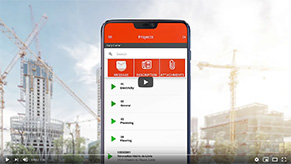
12 June, 2023
Mobile-Punch
SHARE
What Is Dispatch Management and How Do You Optimize It?
Dispatch management is a unique and complex process that can be used for different types of operations, including logistics, transportation, and customer service. With proper optimization, it can help businesses better manage their resources and improve efficiency. In this article, we explore what dispatch management is as well as how you can optimize it.
What Is Dispatch Management?
Dispatch management is the process of planning and dispatching personnel, material resources and services to meet the needs and expectations of organizations. It helps ensure that customers receive their products on time, with proof of delivery.
Effective dispatch management involves optimizing delivery operations in real time by using dispatch management software and mobile devices. By leveraging the latest technology, organizations are able to effortlessly monitor deliveries and track performance metrics such as average delivery times or order accuracy rates. This helps increase customer satisfaction thanks to improved service quality and efficient route optimization.
The 8 best project management apps
Benefits Of Dispatch Management
Dispatch management streamlines the dispatch process, saves time and money, improves communication, facilitates balanced workloads among employees, and provides real-time data about vehicle location and job status. This results in substantially more efficient operations.
Here are some of the benefits associated with using a dispatch management solution:
- Route optimization: Dispatch management software allows businesses to determine the most efficient routes for their dispatchers. This way, they can ensure that all vehicles reach their destinations quickly and safely while minimizing fuel costs.
- Improved communication: With real-time updates, communication between dispatcher and employee is easier than ever. Dispatchers can send messages about arrival times or plan changes without having to make phone calls or wait for employee responses. For their part, employees have access to key data that lets them know when they need to arrive at a certain location or make adjustments.
- Balanced workloads: Businesses can better manage their workloads by ensuring tasks are evenly distributed among staff members based on availability and skill level. This ensures everyone is working efficiently, eliminates idle time, and saves money in the long run. Additionally, it provides peace of mind knowing that employees are not overworked or underutilized.
9 ways to accelerate productivity with project management software
Challenges Of Dispatch Management
Dispatch management involves managing tasks such as scheduling workers, tracking deliveries, planning routes, and improving customer service. Managing these activities manually can be a challenge since it requires a lot of time and effort from staff members.
The challenges associated with manual dispatch management include:
- Inefficiency: Without automated systems in place, dispatchers have limited visibility into driver delivery routes and may not be able to efficiently plan their schedules. This could lead to delays in order fulfillment and a decrease in customer satisfaction.
- Poor communication: Manual processes make it difficult, among other things, to communicate quickly and accurately with drivers regarding order changes or delivery instructions. This may result in some confusion for customers as to when they will receive their items.
- Difficulty tracking deliveries: Manually keeping track of each driver’s progress throughout the day is challenging without automation tools in place. Without real-time information on where each driver is located at any given moment, dispatchers cannot adjust routes accordingly if needed.
To optimize dispatch management, many companies are now turning to software solutions like dispatch management software. This offers several advantages such as providing greater visibility into all aspects of the dispatch process including routing optimization, job assignment, and performance metrics tracking.
8 Tips To Optimize Dispatch Management
1. Understand Your Business Needs
Field service management software can help you plan routes, set delivery time windows, estimate time of deliveries (ETAs), keep track of costs, and much more. By identifying which areas of your business can be improved by the implementation of automated solutions, you can focus your efforts on improving your operational efficiency.
By taking advantage of comprehensive dispatch management solutions, businesses have access to the visibility and insights they need to drive better performance results across their entire fleet operations. This ultimately drives greater cost savings and improved customer experience outcomes.
For example, aspects of your business that can be improved by dispatch management software include:
- The planning and scheduling processes
- Operational costs
- Delivery times and accuracy of ETAs
- Employee management
- The customer experience
- Etc.
2. Implement A Dispatch Management System
Implementing a dispatch management system is key to ensuring your business’s needs are met. With the right system, you’ll have access to powerful dispatch capabilities that optimize service time significantly. This system can be used for mobile workforce and field service monitoring, making it easier to assign optimal routes to drivers and manage service calls efficiently.
The power of a good dispatch management system lies in its ability to combine human intelligence with modern technology for maximum efficiency and cost savings. When implemented correctly, these systems help organizations maximize productivity by allowing them to plan precise routes for their fleet.
The ultimate guide to construction applications
3. Automate Dispatch Management
Implementing automated solutions within your dispatch system can provide greater visibility over all aspects of your operations, from customer service requests down to resource utilization. This allows you to identify opportunities for better performance and avoid potential issues.
Automating dispatch management is a key part of modernizing the service planning process. For example, drivers can receive automated data on optimized routes. Additionally, AI-powered technologies allow external dispatchers to quickly identify which driver should be given a particular task. Automation helps ensure that employees are constantly working at optimal productivity levels. It also enables supervisors and managers to get more done in less time by reducing manual processes while ensuring accuracy.
4. Automate Vehicle Scheduling
Automating vehicle scheduling enables businesses to optimize their delivery process, increasing efficiency and cutting costs.
Here are three ways automation can improve the delivery process:
- Improved dispatching: Automated dispatch systems streamline the way companies schedule and send out delivery trucks or vehicles.
- Effective tracking: With effective tracking, companies can ensure that deliveries are made on time and customers receive the best possible service.
- Enhanced communication: Automation also improves communication between operations staff, drivers, and customers. Drivers get accurate information about pick-up times and locations while customers receive updates regarding when they should expect deliveries. Service requests from customers can also be automatically routed to the right departments.
5. Improve Communication With Drivers
Having systems in place for efficient communication can help businesses streamline operations and prevent delays caused by miscommunications between shippers and drivers. Companies can also use these tools to monitor driver performance while ensuring timely arrivals.
6. Optimize Route Planning
Accurate delivery times are crucial to ensure the success of your business. Route optimization can help businesses achieve them by allowing workers to manage their tasks more effectively. By providing improved visibility into each step of the distribution process, route optimization can improve service levels and ultimately drive better customer satisfaction rates.
7. Analyze And Improve Performance
It’s not uncommon for poor dispatch management to lead to problems such as time gaps between orders or shipments arriving late at their destination. This can lead to angry and annoyed customers. Working on analyzing performance means identifying which times of day are best suited for delivery, what type of routes should be taken, etc., so that these issues don’t arise in the future.
Without a proper analysis, it becomes difficult to identifyareas where optimization may be necessary. Improving performance gives dispatchers more control over their work environment by giving them the ability to focus more intently on making sure everything runs smoothly during deliveries. With improved analytics, dispatchers have access to data-driven insights into their operations.
8. Invest In Technology
The key to successful dispatch management lies in being proactive rather than reactive. Therefore, having a robust technological system in place that can plan out each vehicle’s journey ahead of time is essential to the success of your operations.
Mobile-Punch’s dynamic dispatch app enables dispatchers to easily assign jobs based on location or availability while reducing operational costs through improved efficiency and accuracy. Additionally, this solution provides access to real-time data so dispatchers can monitor each driver’s progress throughout the day while also making it easier to manage potential problems before they occur.
The AI-powered automation features provided by this solution can take into account various factors like road closures or weather patterns to minimize disruptions. Additionally, it can provide regular feedback to drivers and help ensure they adhere to planned schedules. By leveraging dynamic dispatch technology, businesses can ensure better customer service while streamlining their operations.








